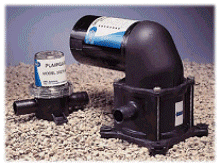briangsmith
Member II
besides the original manual bilge pump-
any recommendations on one, or more,
small electric pumps? and wire to... where,
'spare' fuse? are there 12v cigarette
lighter adapter types available? (hey,
that socket ought to be used for something!)
brian smith
homer, ak
any recommendations on one, or more,
small electric pumps? and wire to... where,
'spare' fuse? are there 12v cigarette
lighter adapter types available? (hey,
that socket ought to be used for something!)
brian smith
homer, ak

 .
.
